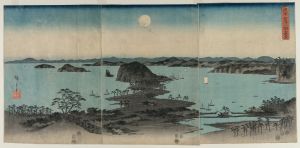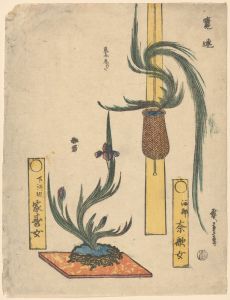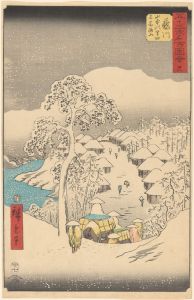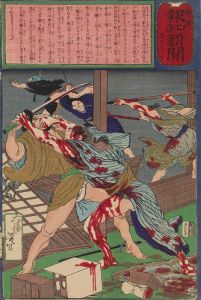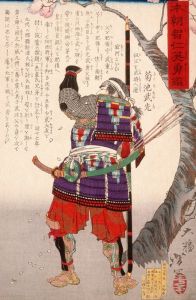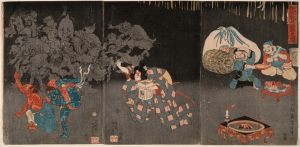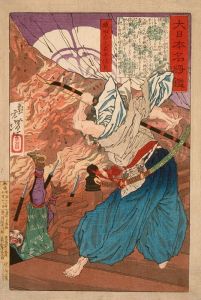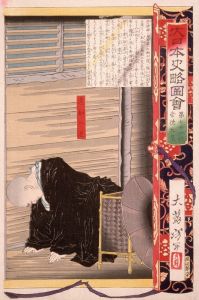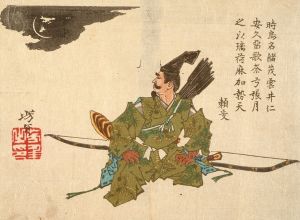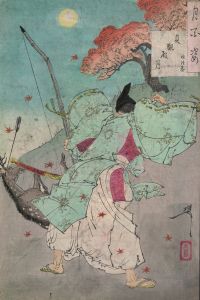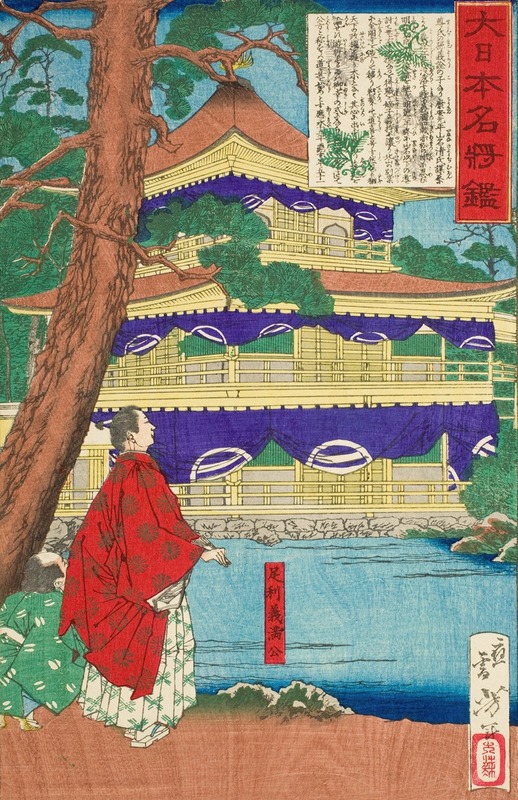
Ashikaga Yoshimitsu Admiring the Golden Pavilion
A hand-painted replica of Tsukioka Yoshitoshi’s masterpiece Ashikaga Yoshimitsu Admiring the Golden Pavilion, meticulously crafted by professional artists to capture the true essence of the original. Each piece is created with museum-quality canvas and rare mineral pigments, carefully painted by experienced artists with delicate brushstrokes and rich, layered colors to perfectly recreate the texture of the original artwork. Unlike machine-printed reproductions, this hand-painted version brings the painting to life, infused with the artist’s emotions and skill in every stroke. Whether for personal collection or home decoration, it instantly elevates the artistic atmosphere of any space.
"Ashikaga Yoshimitsu Admiring the Golden Pavilion" is a woodblock print by the renowned Japanese artist Tsukioka Yoshitoshi, who is celebrated for his work in the ukiyo-e genre during the late Edo and early Meiji periods. Yoshitoshi is often recognized for his innovative approach to traditional Japanese themes and his ability to capture the complexities of human emotion and historical narratives.
This particular print is part of Yoshitoshi's series "Tsuki Hyakushi" (One Hundred Aspects of the Moon), which was published between 1885 and 1892. The series is one of Yoshitoshi's most famous works and is notable for its exploration of historical, literary, and mythical subjects, all unified by the motif of the moon. Each print in the series features a scene that is either directly or indirectly related to the moon, often drawing from Japanese history, folklore, and classical literature.
In "Ashikaga Yoshimitsu Admiring the Golden Pavilion," Yoshitoshi depicts Ashikaga Yoshimitsu, the third shogun of the Ashikaga shogunate, who ruled Japan from 1368 to 1394. Yoshimitsu is a significant historical figure known for his role in consolidating the power of the shogunate and fostering cultural developments during the Muromachi period. One of his most enduring legacies is the construction of the Kinkaku-ji, or the Golden Pavilion, in Kyoto, which served as his retirement villa and later became a Zen Buddhist temple.
The print captures a moment of serene contemplation, with Yoshimitsu gazing at the Golden Pavilion, which is beautifully illuminated by the moonlight. The composition reflects Yoshitoshi's skill in using light and shadow to create a sense of depth and atmosphere. The moon, a central element in the series, adds a layer of poetic symbolism, often associated with beauty, transience, and enlightenment in Japanese culture.
Yoshitoshi's work is characterized by its attention to detail and the ability to convey the mood and personality of historical figures. In this print, the depiction of Yoshimitsu is both regal and introspective, suggesting a moment of reflection on his achievements and the impermanence of life. The Golden Pavilion itself is rendered with delicate lines and intricate patterns, emphasizing its architectural beauty and cultural significance.
The "Tsuki Hyakushi" series, including this print, is considered a masterpiece of Meiji-era art and represents a culmination of Yoshitoshi's artistic development. It reflects both a reverence for traditional Japanese aesthetics and an adaptation to the changing cultural landscape of the time. Yoshitoshi's prints remain highly regarded for their artistic quality and historical insight, offering a window into Japan's rich cultural heritage.
Overall, "Ashikaga Yoshimitsu Admiring the Golden Pavilion" is a testament to Yoshitoshi's ability to blend historical narrative with artistic expression, capturing a moment that resonates with both historical significance and timeless beauty.





